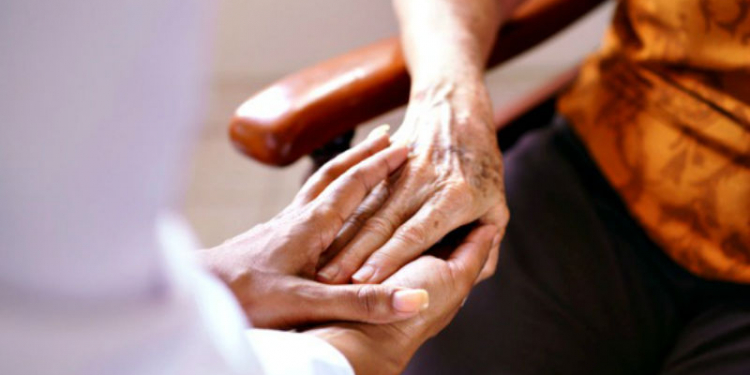The FINANCIAL — Parkinson’s is a progressive neurological condition, which affects around 145,000 people in the UK. Symptoms start to appear when there isn’t enough of the chemical dopamine in the brain to control movement properly. People with Parkinson’s don’t have enough dopamine because some of the nerve cells that make it have died.
There are lots of symptoms, but the three main ones are tremor (shaking), slowness of movement, and rigidity (muscle stiffness).
Doctors typically diagnose and monitor the progression of Parkinson’s by assessing these symptoms using a ‘clinical rating scale’. This relies solely on the clinician’s own subjective impression of the person’s condition.
Since 2016, the NeuroMetrology Lab at the University of Oxford has been developing objective numerical measures to help doctors accurately diagnose disease and monitor the progression of Parkinson’s – which could lead to the provision of more targeted and timely treatment. Until recently this research team, based in the Nuffield Department of Clinical Neurosciences, has been carrying out their research via in-person clinics, attended by patients four times a year.
During the patient’s two-hour clinic visit, the researchers would measure subtle abnormalities in the speed and coordination of fast eye movements (known as saccades), hand movements, and gait. They would also assess cognitive performance using tasks on a tablet. Then they would try to work out whether these numerical measures could accurately and objectively quantify Parkinson’s, and track its progression over time.
The advent of home monitoring
One of the features of Parkinson’s symptoms is that they fluctuate both throughout the day and from day to day. So the research team always knew that they wanted to be able to monitor symptoms at home as well as in the clinic. They were aware that patients’ behaviour during short clinic visits every few months was probably not representative of the condition’s progression overall.
In 2020, the Covid pandemic put an immediate stop to research with human participants, making in-person clinics impossible. This apparent disaster in fact accelerated the researchers’ plans to roll out wearable technology and enable study participants to monitor their symptoms at home.
The biopharmaceutical company MSD is funding this new phase of the research project. The new grant has enabled the team, which I am leading, to work with MSD and the technology company Clinical Ink to capture data on participants’ symptoms at home. The wearable technology combines an Apple watch and phone to test a range of both motor and cognitive aspects of Parkinson’s.
I am delighted to be able to offer to our research patients the opportunity to be monitored so closely by such clever technology. My team has been working hard to make this a pleasant experience for all our patients and we are incredibly honoured to have such tremendous support from the Parkinson’s Disease community.
‘Digital health technologies offer tremendous opportunity to measure and objectively quantify the symptoms and progression of neurological disease,’ said Dr Marissa Dockendorf, Executive Director, Head of Global Digital Analytics and Technologies at MSD Research Laboratories. ‘MSD is excited to collaborate with the University of Oxford to further the development and characterisation of digital measures to support timely and reliable evaluation of potential new treatments for Parkinson’s disease.’
How patients can monitor their symptoms at home
A member of the team sets everything up with participants remotely during a telemedicine appointment, explaining how to use the watch and the app on the phone. The participants receive instructions and the app gives step by step guidance on what to do. Participants are required to carry out testing at home once a month, performing tasks on the app such as reading, testing reaction times, and cognitive tasks.
David Williams, a participant in the study, said: ‘The wearable technology is very easy and comfortable to use. The instructions are very clear, the exercises are well explained and not at all difficult to accomplish. The staff are friendly, approachable people who always leave me with a sense of being valued as a contributor to what is obviously a very important research study. If you’re at all anxious about taking part, don’t be, just sign up. You won’t regret it!’
Kevin McFarthing, another participant, also stressed how easy it was to carry out home monitoring: ‘The OxQUIP team is very professional and thoroughly well organised, and are a pleasure to work with. They did a great job training me to use the remote devices’, he said.
The home monitoring does not replace clinic visits entirely; patients have a telemedicine appointment every four months, as well as the opportunity to come in to an in-person clinic if they wish.
Joan Severson, Chief Innovation Officer at Clinical Ink, said: ‘We are honored that our mobile and wearable technology plays an integral role in this study of Parkinson’s disease in Oxford. We are excited to collaborate with researchers who tirelessly work to increase objective numerical measures for diagnosing and monitoring disease progression.’
Looking to the future
The Covid pandemic was a dark period for many, and yet it accelerated this change in the way this research project is being carried out. The team is now able to gather richer, more nuanced and accurate data to feed into their analysis.
The outcomes of this project will improve the diagnosis, tracking and treatment of Parkinson’s. The insights gained about monitoring disease progression will make the assessment of clinical trials more efficient, leading to faster drug discovery not only for Parkinson’s, but potentially for a range of neurological conditions.

































Discussion about this post